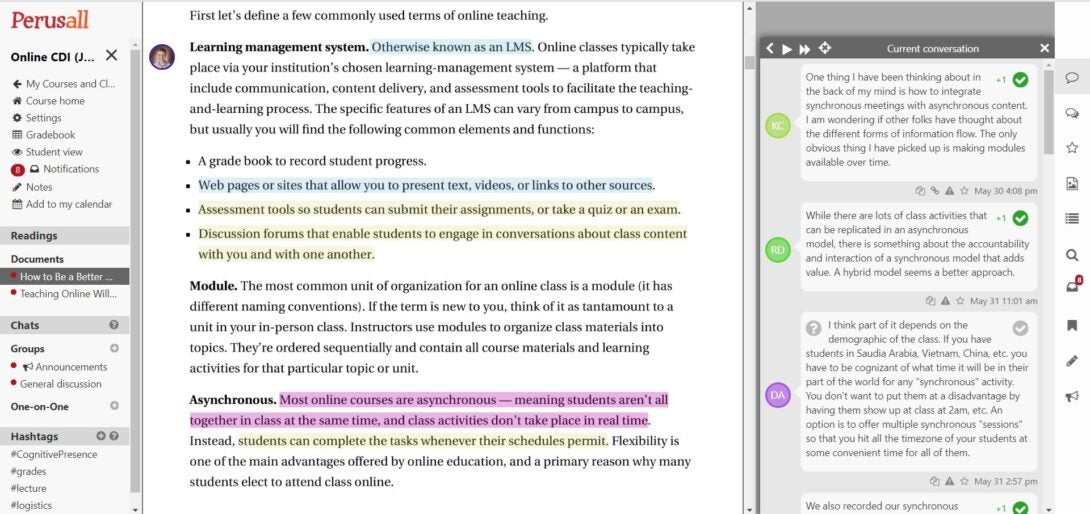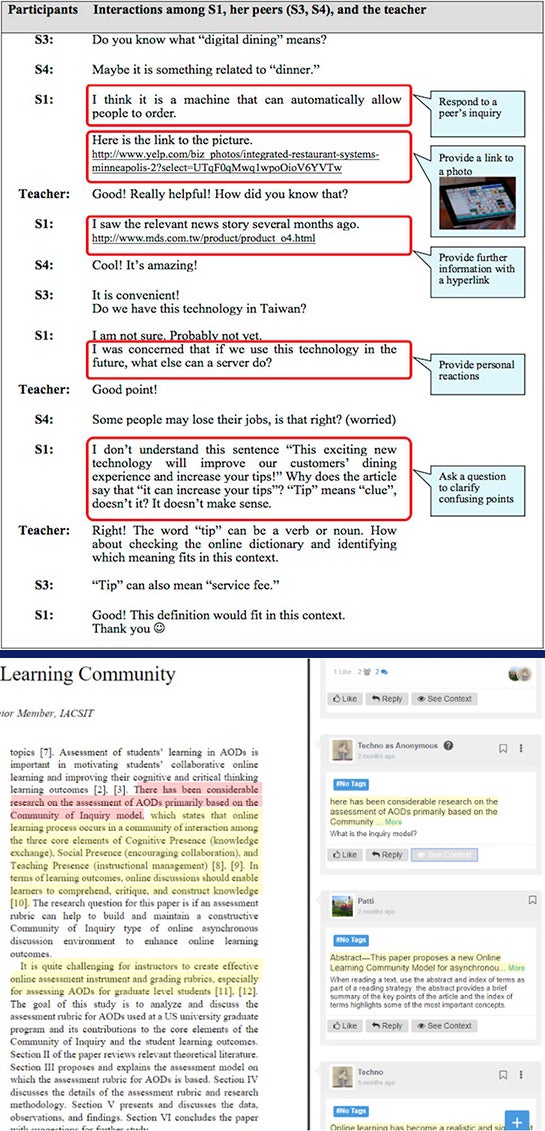Student Spotlight: UIC Students Weigh in on the Benefits of Social Annotation
Title Heading link

Social annotation, a method of collaborative learning, allows individuals to contribute comments, notes, and insights directly onto digital texts assigned by an instructor. This interactive margin becomes a shared space where students can engage with course materials and each other’s perspectives, fostering a rich discussion that extends beyond the physical classroom.
To remain proactive in integrating innovative edtech tools into the curriculum, Learning Technology Solutions ran a social annotation pilot during the Fall 2023 semester to measure how instructors and students could benefit from social annotation. This initiative was driven by the vision to create a dynamic and collaborative educational space where students could interact with texts and each other in a meaningful way. Students from various disciplines stepped forward to share their experiences, offering a comprehensive glimpse into the collective benefits and individual impacts of social annotation.
quote Heading link
The most beneficial part of using a tool like this was being able to see what people were thinking about an article and maybe changing our ideas in a good way.
text Heading link

Bryan Diaz from the College of Business found the tool to be a significant aid in creating a sense of community and refreshing his annotation skills, which he carried throughout the semester: “It positively influenced my learning experience during [my writing class], so it was a big help. [Social annotation] allowed for us to respond to each other’s comments and annotations. Since I was in an online course, this was great because it gave us students a chance to see what others thought.” Melker Bjorndal of Liberal Arts and Sciences, agreed with Bryan Diaz’s thoughts on being able to utilize the power of social annotation: “Seeing what annotations others made helped with ideas that I might not have found myself.”
In the Engineering college, multiple students saw the benefits of using social annotation: Deniz Hincal saw the tool as a window into the minds of peers, enabling a reshaping of ideas: “The most beneficial part of using a tool like this was being able to see what people were thinking about an article and maybe changing our ideas in a good way.” Odea Shallari appreciated the user-friendly nature of the tool, remarking on its clarity and helpfulness in enhancing the annotation process. Mohammed Siddiqui enjoyed the active learning facilitation aspect of social annotation, stating that the tool helped him to actively interact with the assigned course material: “We had to practice highlighting key points, adding comments, and asking questions directly on the material, which helped with understanding the text better.” Mahi Nirav Shah found the tool’s ability to make long texts engaging as a key benefit because she was able to “understand the material in new or different perspectives of other students.”
Jovanni Cardona from the College of Business lauded the tool for its collaborative nature and its role in fostering diverse discussions, echoing a sentiment of collective exploration with the entire class, especially in difficult texts. Aaron Padilla from Liberal Arts and Sciences encountered the fluidity of organizing thoughts through social annotation as particularly useful, despite occasional technical glitches saying that once he “got the hang of it, [he] really liked it.”
Across the board, students acknowledged social annotation for its contribution to their learning process. From facilitating peer responses and enhancing engagement, as noted by Bryan Diaz, to fostering a positive learning environment as highlighted by Melker Bjorndal, the tool has been instrumental in enriching students’ academic experiences. Deniz Hincal and Odea Shallari shared this sentiment, with the former appreciating the increase in interaction and the latter noting the ease of contributing to and understanding diverse perspectives.
Technical smoothness and intuitive design were also common threads in student feedback, with most participants experiencing social annotation as a seamless extension of their learning toolkit. Even those who faced minor technical challenges recognized these as part of the web-based territory, easily navigable and not detracting from the tool’s overall utility.
The collective voice of our student body speaks volumes about the potential of social annotation tools to not only support but also transform learning experiences. As a result of the data collected from the pilot, UIC will continue to use the free version of Perusall (available in Blackboard), but UIC will not be adopting the licensed version of Hypothesis. As we conclude this pilot phase in exploring social annotation tools, we extend an invitation to all UIC students: share your vision for the future of educational technology at our university. What tools and innovations do you see as the next step in advancing our collaborative learning landscape? Your insights will help us navigate the path forward, ensuring that our technological integrations are student-focused, impactful, and aligned with the evolving demands of higher education.